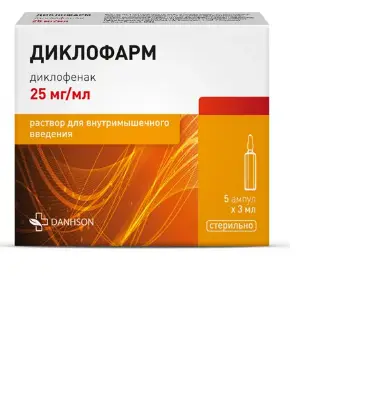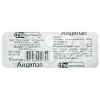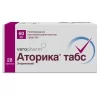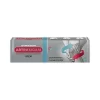Description
Diclofarm Pharmacological action
NSAID, a derivative of phenylacetic acid. It has a pronounced anti-inflammatory, analgesic and moderate antipyretic effect. The mechanism of action is associated with inhibition of COX activity – the main enzyme of arachidonic acid metabolism, which is a precursor of prostaglandins that play an important role in the pathogenesis of inflammation, pain and fever. Analgesic effect is due to two mechanisms: peripheral (indirectly, through inhibition of prostaglandin synthesis) and central (due to inhibition of prostaglandin synthesis in central and peripheral nervous system).
In vitro in concentrations equivalent to those achieved by treating patients does not inhibit cartilage proteoglycan biosynthesis.
In rheumatic diseases, it reduces joint pain at rest and on movement, as well as morning stiffness and joint swelling, and helps increase range of motion. It reduces post-traumatic and post-operative pain, as well as inflammatory swelling.
In case of post-traumatic and post-operative inflammatory phenomena it quickly relieves pain (occurring both at rest and during movement), reduces inflammatory swelling and edema of the postoperative wound.
Inhibits platelet aggregation. With prolonged use it has a desensitizing effect.
Indications
Inflammatory and degenerative diseases of the musculoskeletal system, including. Rheumatoid, juvenile, chronic arthritis; ankylosing spondylitis and other spondyloarthropathies; osteoarthritis; gouty arthritis; bursitis, tendovaginitis; spinal pain syndrome (lumbago, sciatica, ossalgia, neuralgia, myalgia, arthralgia, radiculitis); posttraumatic postoperative pain syndrome accompanied with inflammation (e.g. in dentistry and orthopedics). Renal colic, biliary colic. Posttraumatic and postoperative pain syndrome accompanied by inflammation. Severe attacks of migraine.
Contraindications
Hypersensitivity to diclofenac and excipients of the drug used; “aspirin triad” (attacks of bronchial asthma, urticaria and acute rhinitis when using acetylsalicylic acid or other NSAIDs); erosive-ulcerative lesions of the stomach in the acute phase; severe renal failure (CK <30 ml/min), progressive renal disease; severe hepatic failure, active liver disease clinically confirmed CHD, peripheral arterial and cerebral vascular disease, uncontrolled arterial hypertension, decompensated heart failure; cerebrovascular bleeding; hemostasis disorders; early postoperative period after coronary artery bypass grafting; confirmed hyperkalemia; III trimester pregnancy; breastfeeding; childhood and adolescence under 18 years old.
Dosage and administration method.
- It is administered deeply in a/m. A single dose – 75 mg. If necessary, reintroduction is possible, but not earlier than 12 hours later.
- It can be used for not more than 2 days. If necessary, diclofenac can be taken orally or rectally.
- In severe cases (e.g. colic), as an exception, 2 injections of 75 mg may be given, several hours apart (the second injection should be given in the opposite buttock area).
- Alternatively, once daily intravenous injection (75 mg) may be combined with diclofenac in other dosage forms (tablets, rectal suppositories), with the total daily dose not exceeding 150 mg.
- In migraine attacks, diclofenac should be administered as soon as possible after the onset of the attack, intravenously in a dose of 75 mg, followed by suppositories up to 100 mg on the same day, if required. The total daily dose should not exceed 175 mg on the first day.










